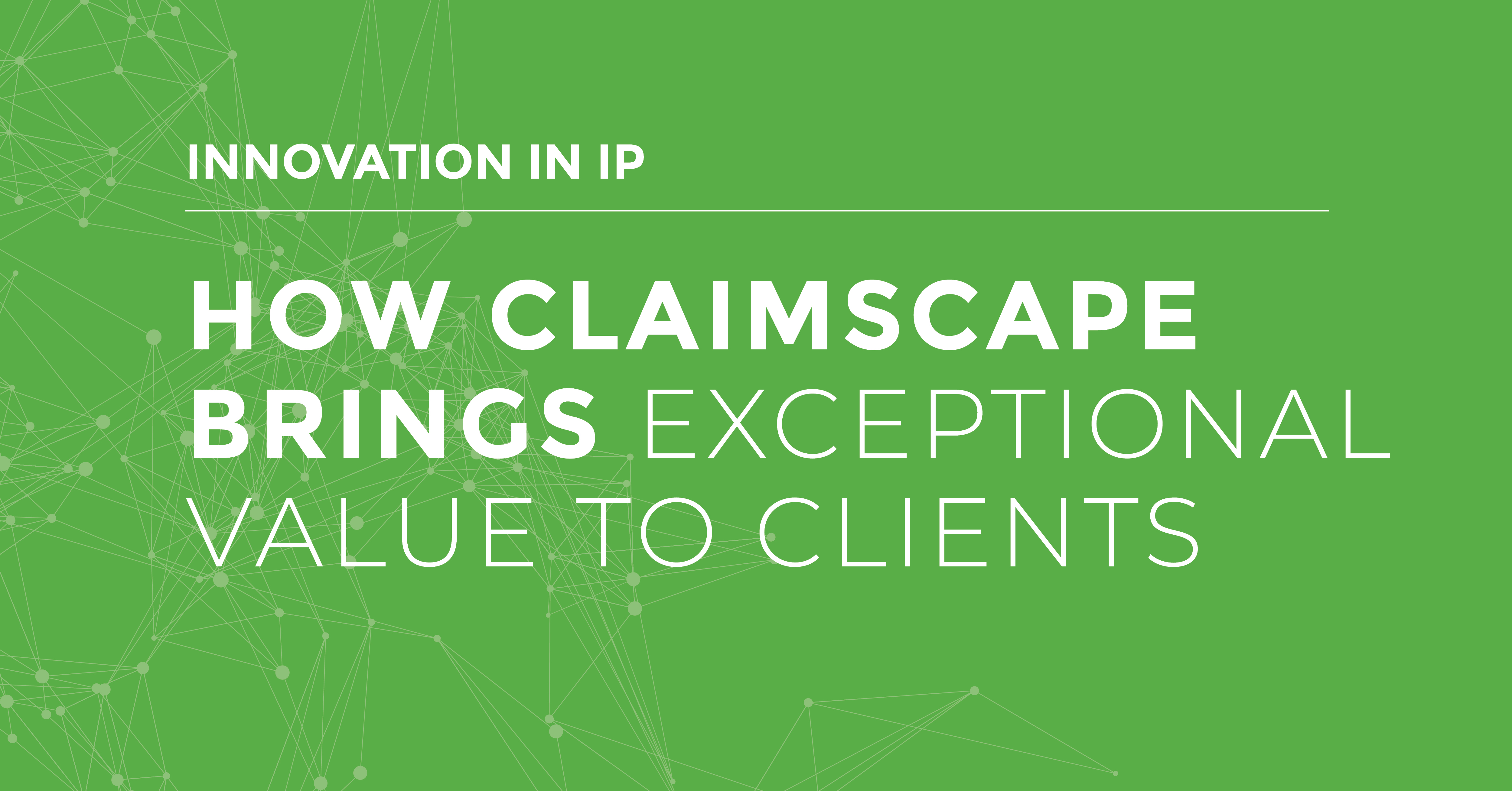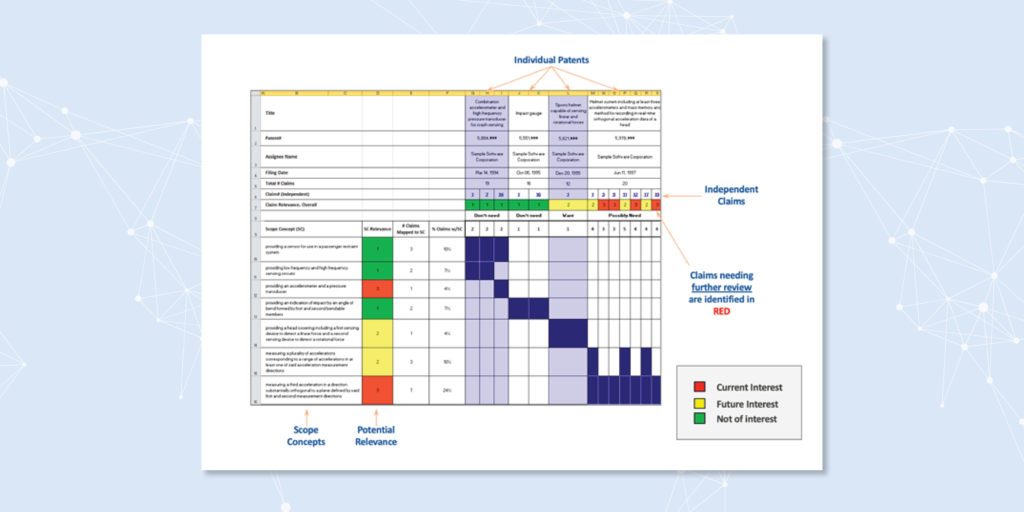How ClaimScape Brings Exceptional Value to Clients

Foundation IP, or FIP, is the earliest web-based Intellectual Property Information Management System available on the market today. Developed beginning in 1999 and commercially released in 2001, the FIP system organizes and shares IP data on the Internet. While it allows for efficient storage and distributed use of IP information, it is very limited in its ability to help users understand the scope of the patents it tracks, or protection afforded by that scope for a company’s product line or the impact of a competitor’s patents on the company’s product line. Unfortunately, this limitation was compounded by a sharp rise in total patents issued and in force from the 1990’s and continuing to this day. Accordingly, in the early 2000s, SLW recognized the need to build tools to more readily understand the scope of patents and how to manage the tsunami of new patents generated by corporations and various patent offices worldwide. Hence, we developed ClaimScape.
SLW’s ClaimScape is a completely different tool from Foundation IP. Instead of simply storing bibliographic and historical information about a patent, ClaimScape provides an extensive set of databases and tools to classify, characterize, sort, and map patents with a focus on the scope and content of the patent claims–but with the ability to analyze patents or other publications as prior art, as well. Further, it can generate informative, actionable, user-friendly patent coverage claim charts on a mass scale.
ClaimScape addresses the need to understand a customer’s portfolio of patents related to their own or other products. It looks at questions such as, was the client infringing on third-party product patents? IP firms today still comb through patents one by one, sit with an inventor, review the features and repeat that process through literally hundreds of related patents and important features. That process is time-consuming and limited by budget and scope: It typically only refers to the patent examiner’s rejection and overcomes a limited number of claims. In that scenario, the limited budgets create a process that is restricted by time and the attorney reading through each application. The attorney would need to drill into each office action, then digest and understand it in order to relate back to the individual case. As the number of cases in competitive patent families increases, the ability to effectively ascertain is affected. Acting under limited time, scope and budget creates a rushed process that cannot be rigorous. It is less than ideal for clients.
SLW recognized the need for interactivity with visibility into the dynamics of a changing patent landscape, such as, if you weigh or change a feature, how does it change or relate now to third-party patents? ClaimScape was built with intention to sort by features that matter and generate interactive claim maps in a structured database. It is able to extract the most important features of a particular patent that it is restricted to or examine what the specific limitations are. There could be a very specific distinguishing feature or combination of features that are ultimately relevant to the case, found through keyword and semantic search. For each and every patent, its related claims and keywords are loaded into the SLW database to have a continuous living history of the patent and all its related matters. The system speeds up a very rigorous process and is still thorough: It culls through more data and organizes it in an efficient manner to make data-driven patent decisions. This provides more value or bang for your buck, as SLW attorneys have all relevant information at their fingertips.
Additionally, ClaimScape is a file history and prior art tracking and analysis tool that tracks every reference cited by a patent office against a client’s pending applications. ClaimScape allows attorneys instant access to file history reports that show how every reference has been cited, what was said about it by the PTO or in the prosecution history by the applicant, and also, what cases the reference has been cited in. Further, for white space and patentability analysis, ClaimScape allows users to quickly identify and map important concepts for a particular patent, highlight features that are novel, and match the semantic or keywords in the database. This will illustrate what is absent from prior art: It’s an encouraging sign in that you see that a feature or combination of features was not previously listed, providing a better chance at patentability. Conversely, for concepts that are shown or referenced elsewhere, the odds are lower to be able to obtain that patent in various degrees between those scenarios. Attorneys can do more than focus on what the examiner finds: They can extend beyond their analysis for a more holistic view and a better way to handle amendments. The case can be further fed into predictive analytics or machine-learning tools with examiner reports, prior art reports against the universe of prosecuted patents and provide the probability of success. This entire process of “what if?” scenarios speeds up the product design process and minimizes the negative impact on the patent portfolio.

Lastly, ClaimScape has been utilized for white space mapping, or determining what has not been invented. In a reverse methodology, you can organize the data to yield what is available against a specific feature or combination of features. In this fashion, a company or inventor can state the 25 concepts that they are interested in and start their R&D process with an educated view of the landscape of where to focus their research and design.
Historically and today, SLW continues to break the mold in making data-driven guidance with sophisticated information management systems. From Foundation IP, ClaimScape, automated docketing and artificial intelligence, your patent dollars go much further, and yield results much faster.
 Steve Lundberg
Steve Lundberg
Principal & Chief Innovation Officer
Back to All News
